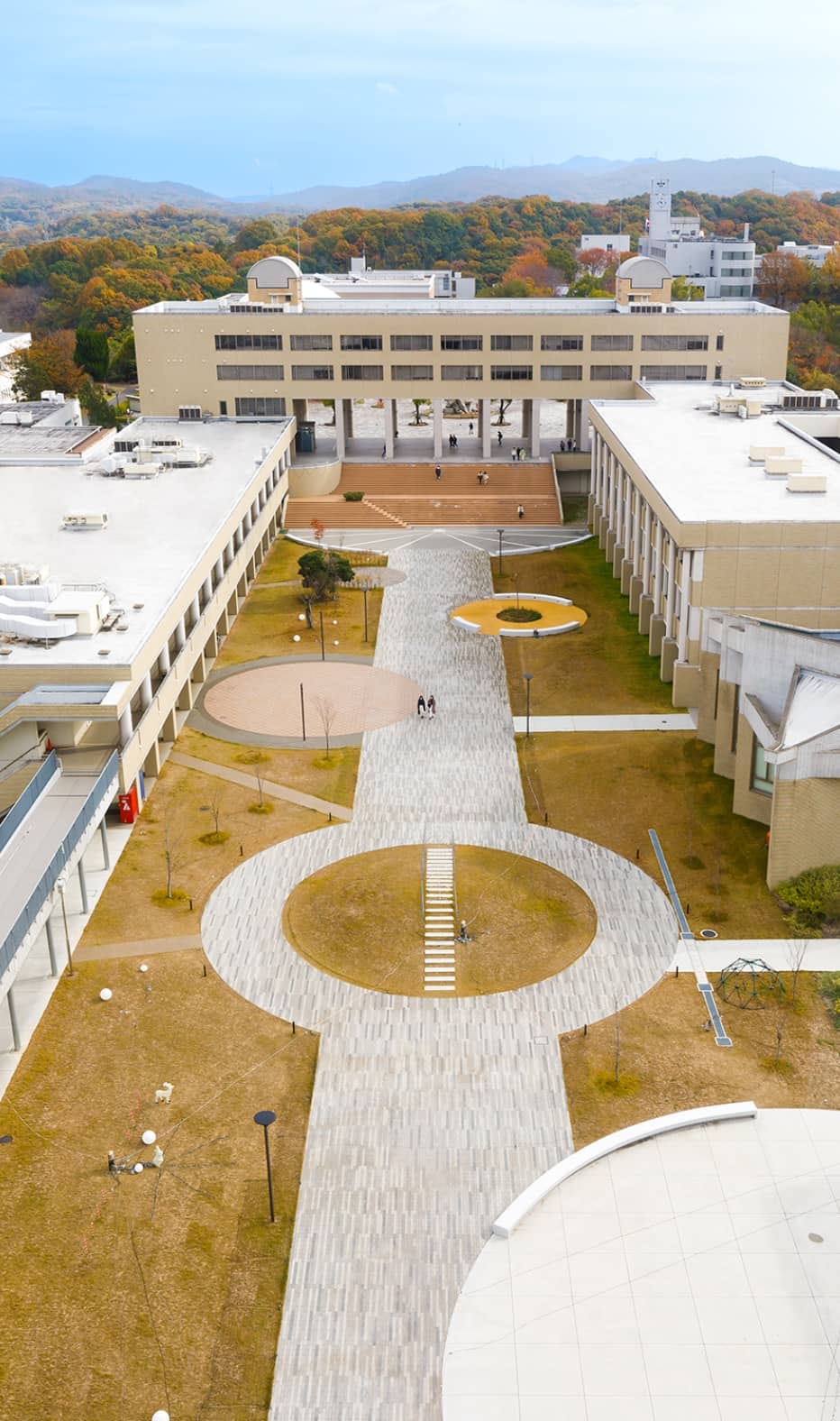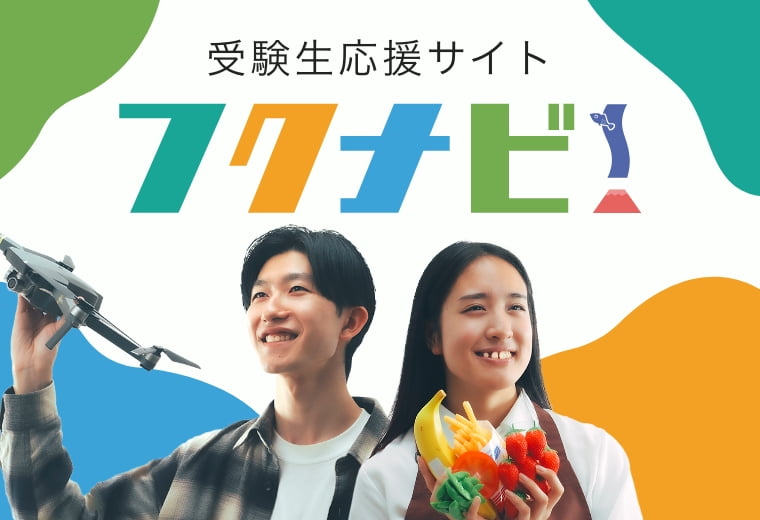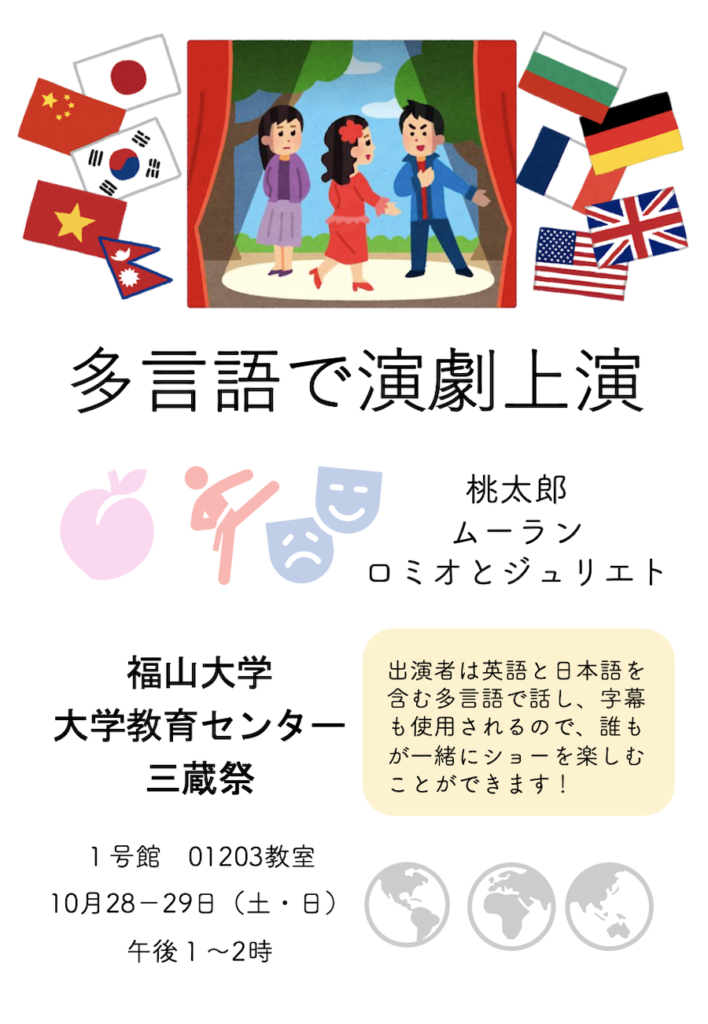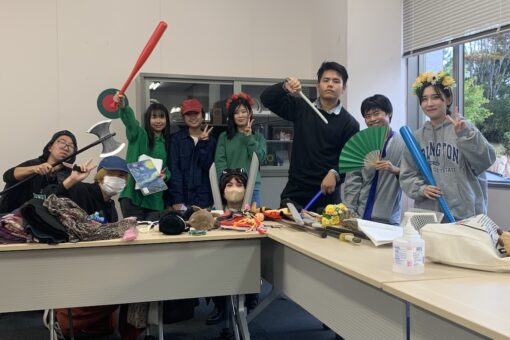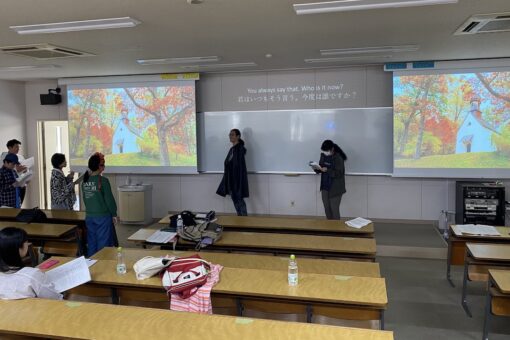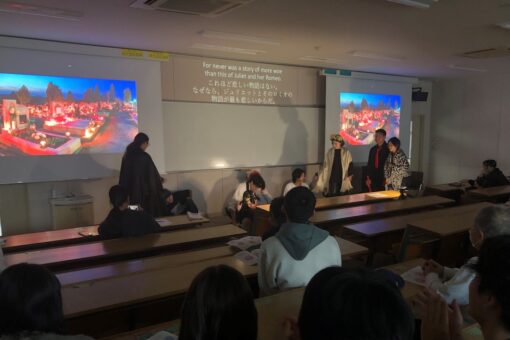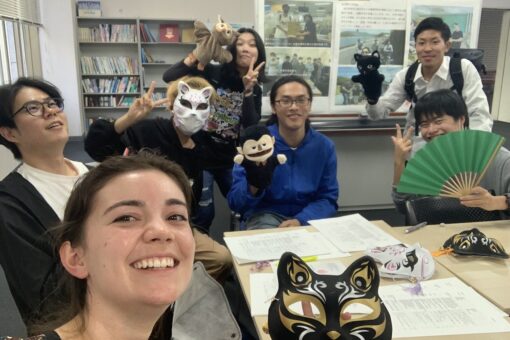
【大学教育センター】三蔵祭で多言語演劇を上演しました!
英語教育を担当している DRIUSSI Cordelia 助教から、10月28日(土)、29日(日)に三蔵祭のイベントの一つとして上演された多言語演劇についての報告が届きました。英語はもちろん、中国語や韓国語、ネパール語、ブルガリア語、ギリシャ語、ドイツ語の合計8ヶ国語による多言語演劇の上演までに至る道のりを、英語と日本語でお届けします。(投稿:学長室ブログメンバー 前田)
Last year, the Academy Award for Best International Film went to the Japanese film Drive My Car (2021), where a Japanese man directs a production of the Russian play Uncle Vanya in a theater company in Hiroshima. The play is a multi-language experience, because each actor performs their lines in their native language: Japanese, Korean, English, Mandarin, Tagalog, Indonesian, German, Malaysian, and even Korean Sign Language. The actors must learn a little bit of each language to understand each other and successfully perform the play. The audience follows the story with the help of subtitles which are projected above the stage, the same method often used for opera and kabuki performances.
昨年のアカデミー賞国際映画賞は、日本映画『ドライブ・マイ・カー』(2021)が受賞しました。この作品は、ロシアの戯曲「ワーニャ伯父さん」を広島の劇団で上演する監督のお話です。映画の中の劇は、各俳優が母国語で台詞を演じるという多言語体験となりました。日本語、韓国語、英語、北京語、タガログ語、インドネシア語、ドイツ語、マレーシア語、そして韓国語の手話まで使っての上演でした。俳優たちはお互いを理解し、劇を成功させるために、それぞれの言語を少しずつ学ばなければなりません。私たち観客は舞台に映し出される字幕でストーリーを追いますが、これはオペラや歌舞伎でよく使われる手法と同じものです。
Drive My Car (Japanese Trailer)
Drive My Car (English Trailer) The movie is in Japanese, so it is not actually an English Language trailer, just the words on the screen are in English. この映画は日本語によるものなので、実際のところ英語の予告編ではなく、スクリーンに映し出される文字が英語になっているだけです。
This movie was so interesting to me, as an international person with an interest in theater and language learning. I thought it would be wonderful to try making a production like this at our university, with a collection of short plays that the audience has heard of before. We have a wide variety of students from many countries here on campus, and the University Education Center offers many foreign language classes, so we had the opportunity to try a multiple-language theater project for Sanzosai, our own university’s annual festival.
この映画は、演劇や語学学習に興味を持つ英語教員の私にとって、とても魅力的なものに感じました。観客が一度は耳にしたことがあるような短編戯曲を集めて、このような多言語での演劇を私たちの大学で取り組んでみたいと思いました。福山大学には様々な国から来た学生がいますし、大学教育センターでは多くの外国語クラスが提供されています。そこで、福山大学の恒例行事である「三蔵祭」で、学生たちと多言語演劇プロジェクトに挑戦することにしました。
The first step was to choose the stories and write the scripts. We started with Momotaro, because the audience at Sanzosai would mostly be Japanese people, and the story can be familiar even with some actors speaking in foreign languages. Next, to celebrate the Chinese students and culture, the Disney version of the Legend of Fa Mulan was chosen. And finally, the theater classic Romeo and Juliet was summarized into a short script. Students worked together with the producer to write an English & Japanese script, and it was finished at the end of the first week of rehearsals.
まず、物語を選び、脚本を書くことから始めました。三蔵祭に集まる人々は日本人の方が多いので、外国語を話す役者にとっても親しみやすいストーリーになるように、『桃太郎』の物語を選びました。次に、中国の学生と中国の文化を紹介するために、ディズニー版の『ムーラン』を選びました。そして最後に、世界中の誰もが知っている『ロミオとジュリエット』を選び、短い脚本にまとめました。学生たちと一緒に英語と日本語の台本を書き、リハーサル1週目の終わりに完成させました。
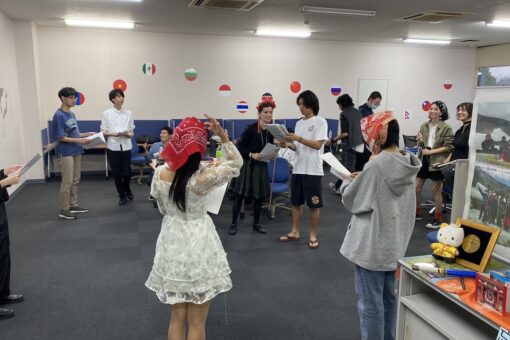
Next, we had to translate the script into different languages to help the actors learn it comfortably in their native language, and to rehearse across language barriers. The entire script was translated into Mandarin for the Chinese international students. Some actors translated their own lines into other languages, like Korean and Nepali. With the same script in many languages, everyone can feel comfortable practicing in any language they want. For example, maybe Romeo is speaking Japanese, but tomorrow, he reads his lines in English, and the day after that, he reads in Chinese.
次に、俳優の学生たちが母国語で快適に学べるように、また言葉の壁を越えてリハーサルができるように、台本をさまざまな言語に翻訳しておく必要がありました。台本はすべて、中国人留学生のために北京語に翻訳されました。また、俳優たちはそれぞれ自分のセリフを韓国語やネパール語に翻訳しました。多くの言語で同じ台本があれば、誰もがどの言語でも安心して練習できます。例えば、ロミオが日本語で話すパートでも、次の日は別の人が英語で話すこともできますし、その翌日には中国語で読むこともできます。
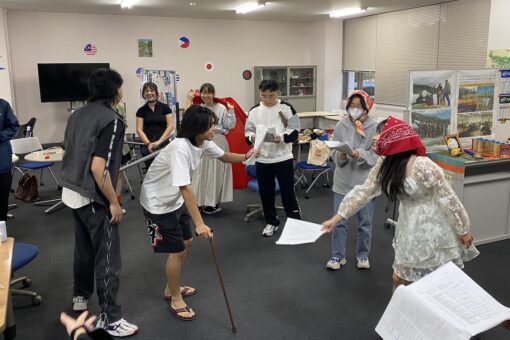
We only had one month to rehearse and prepare for the Sanzosai Festival, so we rehearsed in the Global Lounge every day. However, university students are very busy, and we often needed people to read the lines for an actor who had to go to class. We had 10 “Rehearsal Actors” which included many of the students resting in the Global Lounge between classes, and the students and faculty of the GCC (global communication club). Thank you to the Rehearsal Actors because we could not do it without you!
三蔵祭のリハーサルと準備期間は1ヶ月しかなかったので、毎日グローバル・ラウンジでリハーサルを行いました。しかし、学生たちはとても忙しく、授業に出なければならない俳優の代役が必要になることも多くありました。授業の合間にグローバル・ラウンジで休んでいる学生や、GCC(グローバル・コミュニケーション・クラブ)の学生や教員など、10名の「リハーサル・アクター」が協力してくれました。リハーサル・アクターの皆さん、ありがとうございました!
We needed costumes and weapons for all three of the short plays, so we went to stores such as Daiso, 3Coins, and Second Street to buy cheap items. It is amazing how many toy weapons are available for such a low price! We also borrowed items from our friends and made other items by hand.
三つの短編劇すべてに衣装と武器が必要だったので、ダイソー、3コインズ、セカンドストリートなどの店をまわり、できるだけ出費を抑えました。それにしても、日本ではおもちゃの武器がこんなにも安く手に入るのですね!驚きました!足りないものは、友達から借りたり、手作りしたりして揃えました。
In the final week of rehearsal, we finished the subtitles and created a PowerPoint presentation out of stock photos and irasutoya images for the stage setting and backgrounds. An affordable way to make a theater production in a classroom! Faculty members from the University Education Center and the Faculty of Economics worked together to make a platform in the middle of the classroom for the extra projector we put the subtitles on.
リハーサルの最終週には字幕を完成させ、舞台装置や背景はストックフォトやイラストなどの画像を活用し、パワーポイントを作成しました。映像を活用するのは、教室で演劇作品を作る手頃な方法です!大学教育センターと経済学部の教員の協力を得て、教室の真ん中に字幕を投影するプロジェクターを置くための台を作りました。
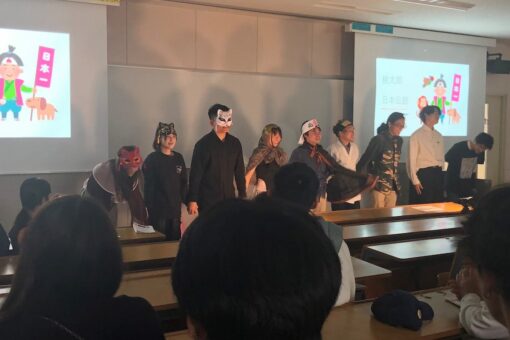
There were 22 participating students, half foreign and half Japanese. 14 students performed and 8 students helped in the production side, including costumes, translations, organization, and slideshow operation. Eight languages were spoken in the production: Japanese, English, Chinese, Korean, Nepali, Bulgarian, Greek, and German.
参加学生は22名で、外国人と日本人が半々でした。14名の学生が俳優として出演し、8名の学生が衣装、翻訳、構成、スライドショーの運営など、制作サイドを手伝いました。当日の劇では、日本語、英語、中国語、韓国語、ネパール語、ブルガリア語、ギリシャ語、ドイツ語の8ヶ国語が飛び交いました。
In the end, we performed three times: a final dress rehearsal on Friday, October 27, and the two days of Sanzosai Festival, October 28 & 29. A total of 72 people attended the performances, including students and faculty members and visitors. We appreciate everyone who came to see the production, and we hope for your future support in our theater productions!
10月27日(金)に衣装を着けての最終リハーサルと、28日(土)・29日(日)の三蔵祭2日間の計3回公演を行いました。公演には、学生、教職員、見学者を含め、合計72名の方々にご来場いただきました。ご来場いただいた皆様、本当にありがとうございました!今後とも三蔵祭をよろしくお願いいたします!
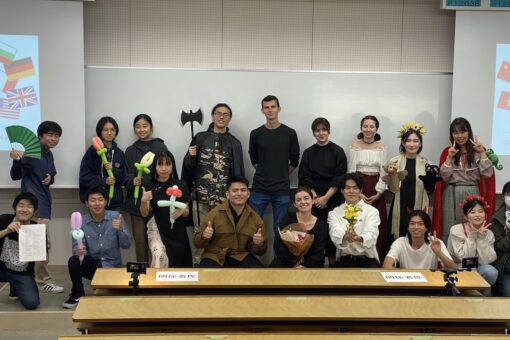 The cast and crew on Saturday, October 28.
The cast and crew on Saturday, October 28.
10月28日(土)の俳優と裏方です。
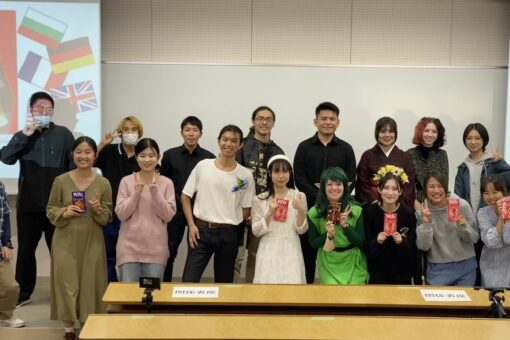 The cast and crew on Sunday, October 29.
The cast and crew on Sunday, October 29.
10月29日(日)の俳優と裏方です。
学長から一言:福山大学の語学教育そして国際化にとって画期的な試みが大学祭に登場しました。自身の本来の専門が演劇教育である大学教育センターのコーデリア・ドリュッシー助教が脚本を書くことから始めて、各国語を母語とする人、あるいは学んでいる人、それぞれが得意な言語を使っての多言語劇の上演。大道具・小道具の調達や練習を含めて、キャストもスタッフも文字どおり国際的な雰囲気の中で頑張りました。これには一言叫ぶ以外にないでしょう。「ブラボー!」

